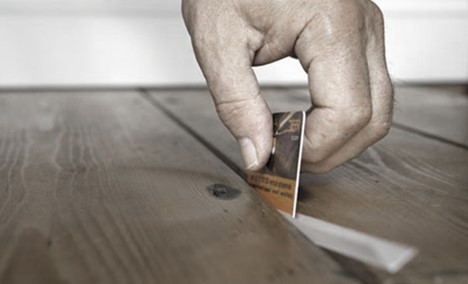The Importance of Moisture Readings in Property Drying
The Importance of Moisture Readings in Property Drying
Moisture readings are used extensively at WINMAR® Nelson because we specialize in safely drying properties after water damage in order to reduce unnecessary demolition of materials that could have been dried. When you have suffered a water loss, it is important to phone a restoration contractor immediately because when we catch water losses right away, we can often dry the wet materials such as drywall and flooring so quickly that mold cannot grow, and the materials do not need to be replaced.
In this blog, we will further explore why moisture readings are taken when drying a property, and how they can help ensure that the restoration process is effective, efficient, and most importantly safe.
Why is Moisture Readings Important in Property Drying?
1. Determine Extent of Moisture Damage: During our initial visit, our water restoration technician uses moisture meters, hygrometers, infared thermometers, borescopes, and thermal cameras to determine where the water migrated, what materials are wet, and how wet they are on a scale of 1%, to 100% moisture content. Is your drywall wet on the lower 18”, or is the full wall wet floor to ceiling? What about the insulation behind the drywall? Are the cabinets dry? What about under cabinets behind the toe-kick? Is the material only slightly wet at 15% moisture content, or is it fully saturated at 100%? This vital information is used to develop a drying plan that is tailored to the specific needs of your property.
Pin moisture meter reading wet on a wood surface
Thermal imaging revealing wet spots on a hallway carpet
2. Accurate initial drying records help your technician to size the equipment for the project. WINMAR® Nelson is an IICRC Certified Firm who strictly follows the IICRC Standard of Care (S500). The S500 provisions specific calculations on how many air movers and dehumidifiers should be placed in the affected areas, and the amount of moisture present in the material is a key variable in the equipment sizing calculation the technician performs for each affected area. If your restoration contractor is placing equipment based on their judgement alone, (or what we refer to as willy-nilly), then you should request a restoration contractor who ensures the equipment is calculated and placed in accordance with the IICRC standard of care.
3. Monitor Progress: Moisture readings are taken throughout the drying process to monitor progress and to ensure that the property is drying at a consistent rate. This helps WINMAR® Nelson’s water restoration technicians to identify any areas that require additional attention, and to adjust the drying plan as needed. Your technician visits your home every day to ensure the rate of drying is acceptable and within the standard. It is important that you do not turn off the drying equipment or permanently open/close doors or windows in the work area because this will not only skew the drying readings, but also increase the risk of mold growth that might not be covered by your insurance policy if the dry down was tampered with or equipment unplugged at night by the homeowner.
Successful dry down underway of wood framing inside a home
4. Avoid Over-Drying: Over-drying a property and adding too much hot and dry air can cause secondary damage to building materials and furnishings. If your home has a significant amount of wood trim, drywall, furniture, or tongue and groove, rapidly changing the equilibrium temperature and humidity can cause shrinkage and/or cracking. Moisture readings help property restoration companies to avoid over-drying by providing an accurate measurement of moisture levels, which allows our highly trained technicians to make well-informed decisions about when to stop the drying process, when to ventilate the space, and when to modify the drying method to either add heat, reduce heat, or abandon the attempt of drying in place altogether.
Gaps in hardwood flooring formed after moisture reduction
5. Document Results: Moisture readings are documented throughout the drying process, providing a record of the progress that has been made. This documentation can be used to demonstrate the effectiveness of the drying process and to provide reassurance to the property owner that their property is safe and dry. When you sell your home, disclosing prior floods may be required and having good drying records will provide the prospective buyers peace of mind that that are not purchasing a moldy home.
Drying records reflecting the successful dry down of drywall
6. Prevent mold growth: The IICRC Standard of Care S520 states that mold can grow in as little as 72 hours under ideal conditions. This means that we need to target a reduction of moisture content to safe limits within 3 days. Each day over the 3rd day it takes to dry the material poses an increased risk of mold growth. For further reading on mold, visit our post “I think my home has a mold problem”.
In conclusion, moisture readings are a crucial tool that provides accurate information about the extent of moisture damage in your home. They not only help to monitor progress, but also to avoid over-drying, document results, and help prevent mold growth.
By allowing our technicians to access your home daily to gather quality moisture readings during the drying process, WINMAR® Nelson helps ensure that your property is safe, dry, and ready for use once we are finished.






